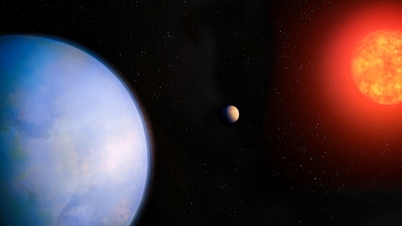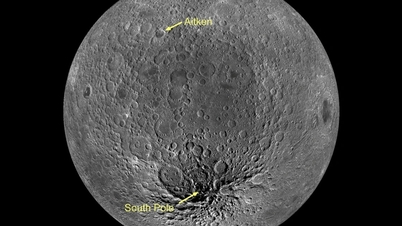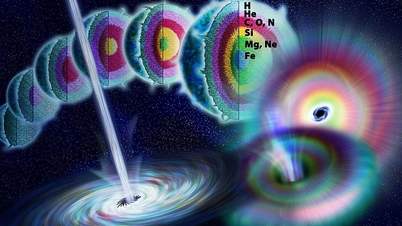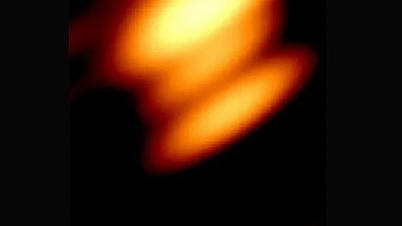(NLDO) - Around an ancient star less than 6 light years from Earth, scientists have discovered signs of 4 rocky planets.
Using the MAROON-X instrument on the Gemini North telescope of the International Gemini Observatory and the ESPRESSO instrument on the Very Large Telescope of the European Southern Observatory (ESO), American scientists discovered four "mini-Earths" around Barnard's star.

Graphic image of four "mini-Earths" orbiting Barnard's star - Photo: NOIRLab/NSF/AURA
Barnard's Star is an old celestial body, estimated to be 10 billion years old, and is a faint red dwarf.
Also known as Gliese 699 or GJ 699, Barnard is located in the constellation Ophiuchus, invisible to the naked eye despite being less than 6 light-years from Earth.
According to researcher Ritvik Basant from the University of Chicago (USA), the four planets discovered around Barnard are all rocky and have a mass of only about 20-30% of the Earth's mass.
So the authors call them "mini-Earths." Often just a little younger than their parent star, they are also extremely old planets.
For comparison, our Earth is about 4.54 billion years old, orbiting our mother star, the Sun, which is about 4.6 billion years old.
The four new planets are also among the smallest exoplanets ever observed by humanity.
Of the four, three are definitely visible, while the other is a little fainter. It doesn't show up in Gemini North data, but only shows up under the more powerful "eye" of the Very Large, according to Sci-News.
Writing in Astrophysical Journal Letters, the authors say the identification of these tiny rocky planets is a major breakthrough in astronomical observation.
These four planets are also proof that the potential of current telescopes in the world is still very large, especially in searching for "copies" of Earth.
Source: https://nld.com.vn/bon-tieu-trai-dat-lo-dien-co-the-da-10-ti-nam-tuoi-196250314110700816.htm




![[Photo] Prime Minister Pham Minh Chinh chaired a meeting to discuss solutions to overcome the consequences of floods in the central provinces.](https://vphoto.vietnam.vn/thumb/1200x675/vietnam/resource/IMAGE/2025/10/29/1761716305524_dsc-7735-jpg.webp)
![[Photo] National Assembly Chairman Tran Thanh Man received a delegation of the Social Democratic Party of Germany](https://vphoto.vietnam.vn/thumb/1200x675/vietnam/resource/IMAGE/2025/10/28/1761652150406_ndo_br_cover-3345-jpg.webp)
![[Photo] Flooding on the right side of the gate, entrance to Hue Citadel](https://vphoto.vietnam.vn/thumb/1200x675/vietnam/resource/IMAGE/2025/10/28/1761660788143_ndo_br_gen-h-z7165069467254-74c71c36d0cb396744b678cec80552f0-2-jpg.webp)





























![[Photo] Draft documents of the 14th Party Congress reach people at the Commune Cultural Post Offices](https://vphoto.vietnam.vn/thumb/1200x675/vietnam/resource/IMAGE/2025/10/28/1761642182616_du-thao-tai-tinh-hung-yen-4070-5235-jpg.webp)

































![[Infographic] Vietnam's socio-economic situation in 5 years 2021-2025: Impressive numbers](https://vphoto.vietnam.vn/thumb/402x226/vietnam/resource/IMAGE/2025/10/29/1761730747150_anh-man-hinh-2025-10-29-luc-16-38-55.png)






































Comment (0)